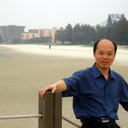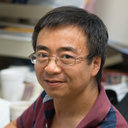The chemical and biologic profile of a red clover (Trifolium pratense L.) phase II clinical extract.
Mots clés
Abstrait
OBJECTIVE
To document the chemical and biologic profile of a clinical phase II red clover (Trifolium pratense L.) extract by identifying and measuring the major and minor components visible in the high-performance liquid chromatography-ultraviolet (HPLC-UV) chromatogram and evaluating each compound for estrogenic and antioxidant activity.
METHODS
Individual compounds in the preformulated (i.e., no excipients present) extract were identified by either chemical isolation followed by structure elucidation or matching to retention time and molecular mass of chemical standards via liquid chromatography-mass spectrometry (LC-MS) analysis. Quantitation of the amounts of compounds found in the preformulated extract was done using HPLC-UV or LC-MS. Isolated compounds or standards were evaluated for their ability to: (1) induce alkaline phosphatase (AP) in an endometrial carcinoma cell line, (2) competitively bind to recombinant human estrogen receptors (ERs) alpha (alpha) and beta (beta), and (3) act as antioxidants by scavenging 2,2-di(4-tert-octylphenyl)-1-picrylhydrazyl (DPPH) free radicals.
RESULTS
The preformulated red clover extract had 50% effective concentration (EC 50) of 2.0 to 2.2 microg/mL in the AP estrogenicity assay, and 50% inhibitory concentrations (IC(50)s) of 18.4 to 32.6 microg/mL and 1.9 to 3.4 microg/mL in the ERalpha and ERbeta binding assays, respectively. The preformulated extract was composed of 35.54% isoflavones, 1.11% flavonoids, 0.06% pterocarpans, < or =0.03% coumarins, and < or =0.03% tyramine. Daidzein, genistein, formononetin, biochanin A, coumestrol, and naringenin were estrogenic in the AP assay, and all of these, except formononetin, bound to one or both ERs.
CONCLUSIONS
The major and minor chemical and active estrogenic components of a preformulated phase II red clover clinical extract were identified, quantitatively measured, and the final capsule doses were calculated. The extract is currently under evaluation in a year-long clinical study for the alleviation of menopausal hot flashes. This is the first report to thoroughly summarize the chemistry and biology of all major peaks observed in the HPLC-UV chromatogram of a clinical red clover dietary supplement.



